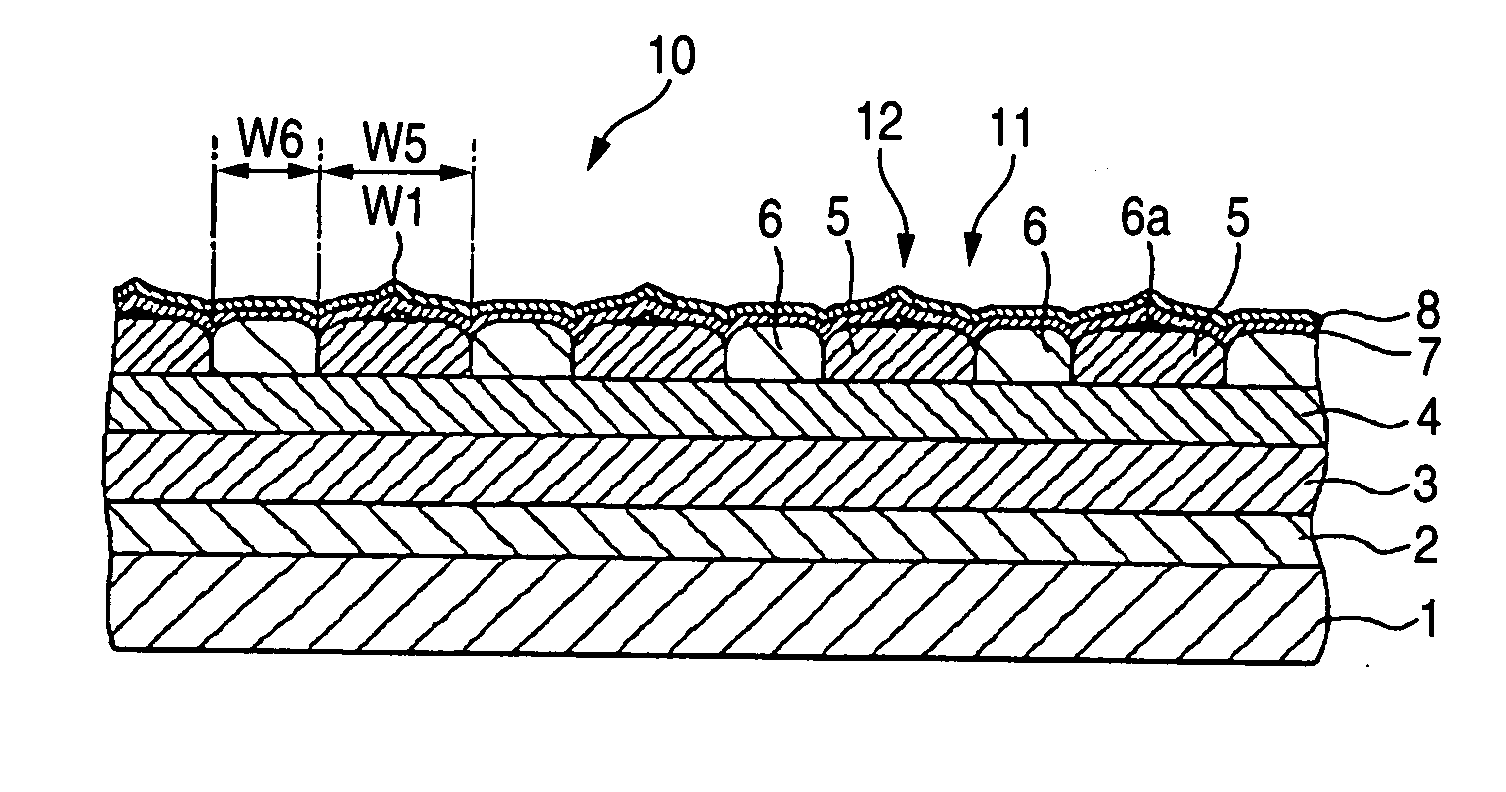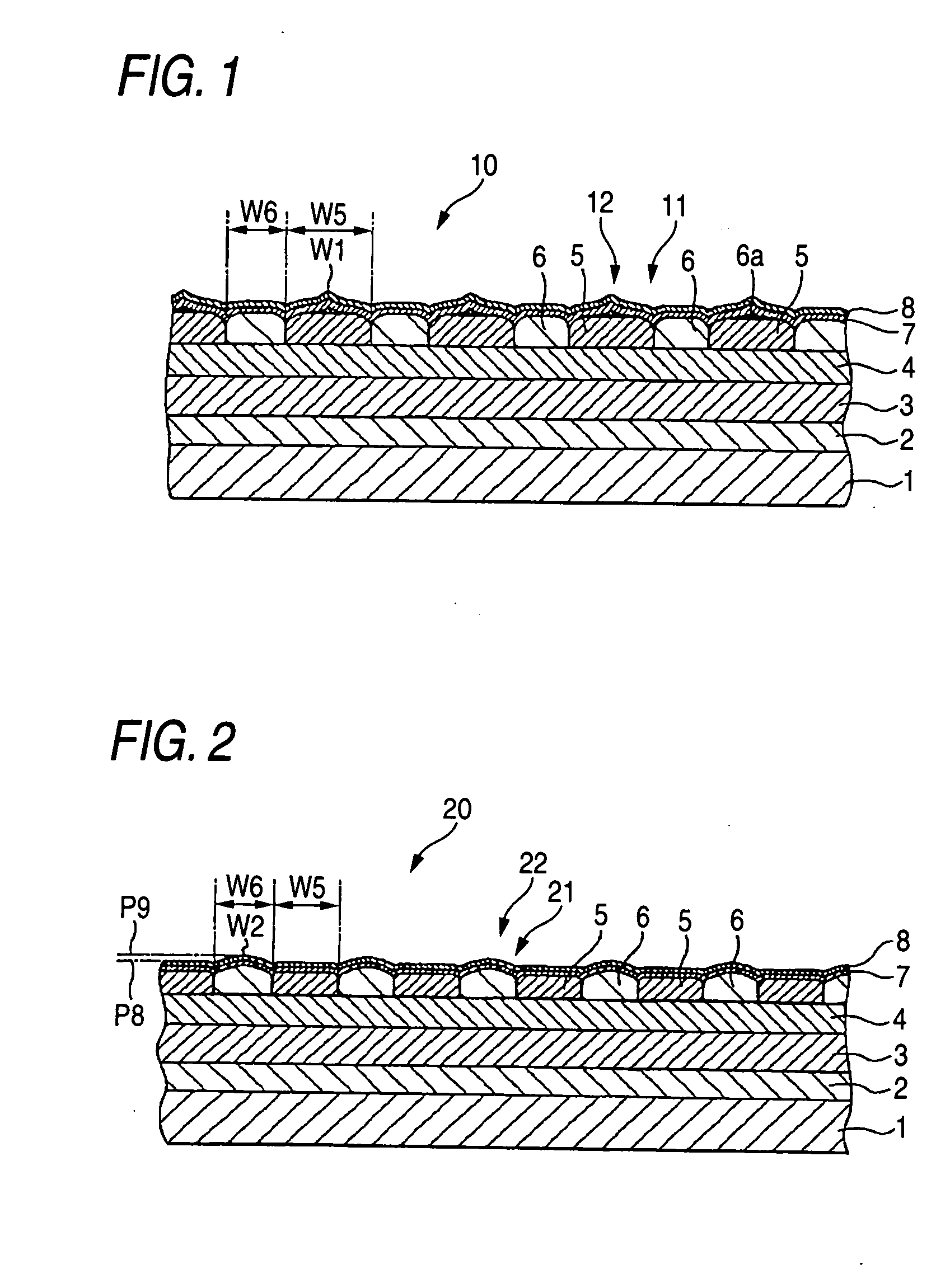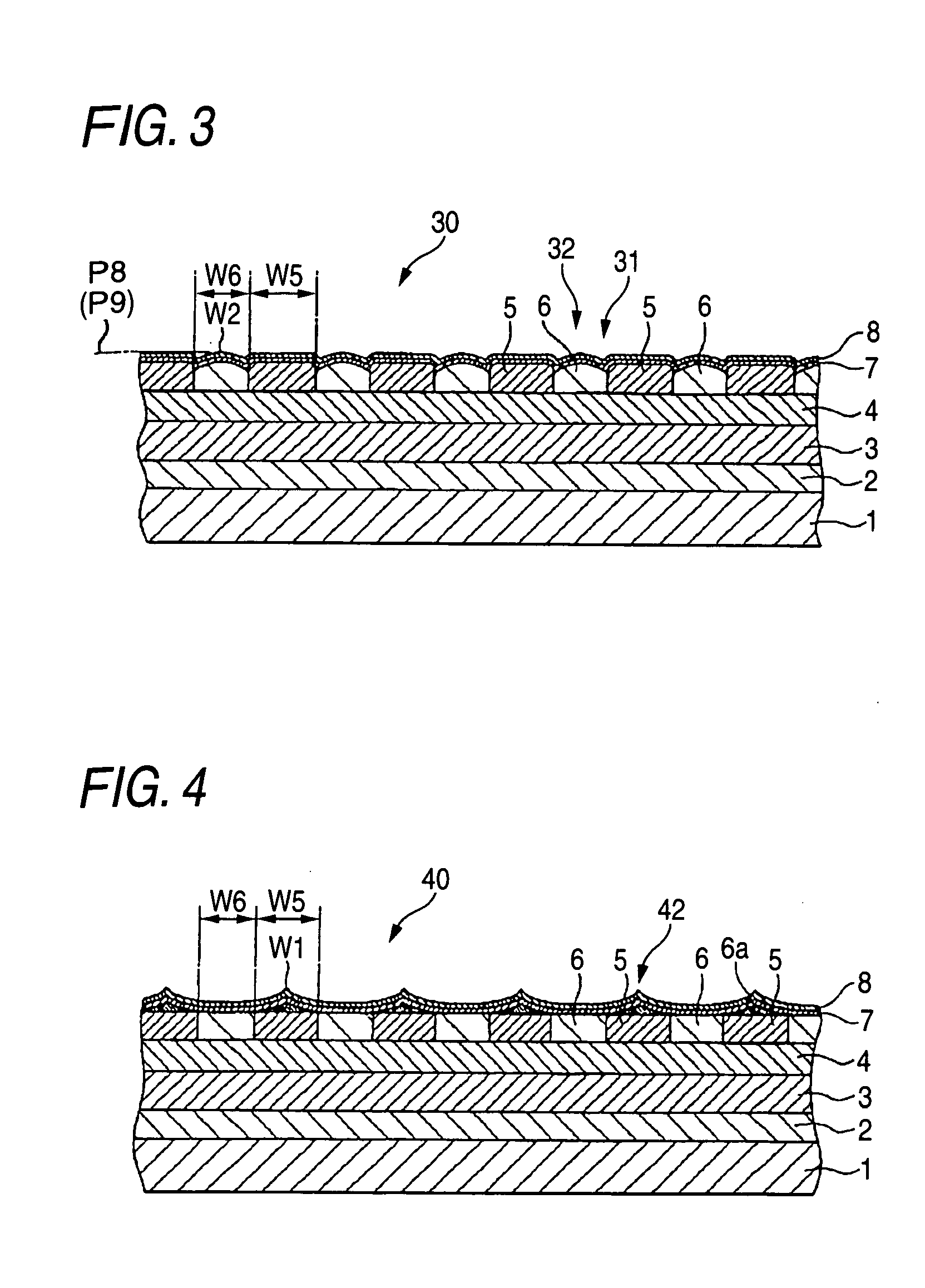Magnetic recording medium
a recording medium and magnetic technology, applied in the field of magnetic recording mediums, can solve the problems of side fringes, crosstalk, etc., improve the areal density using background-art techniques, and the sensitivity is lowered, so as to increase the frictional resistance between the magnetic head and the magnetic recording medium, the effect of increasing the frictional density and driving stably
- Summary
- Abstract
- Description
- Claims
- Application Information
AI Technical Summary
Benefits of technology
Problems solved by technology
Method used
Image
Examples
example 1
[0101] A non-magnetic layer 6 was formed on the to-be-processed body obtained thus. First, as a first film formation step, a film of SiO2 was formed to be 5 nm thick by a sputtering method in the conditions of 500 W in film formation power and 0.3 Pa in Ar gas pressure. Next, as a second film formation step, a film of SiO2 was formed thereon to be 45 nm thick by a sputtering method in the conditions of 500 W in film formation power, 0.3 Pa in Ar gas pressure and 150 W in bias power. Incidentally, the film thickness here means the thickness of a film on a flat surface when the film was formed on the flat surface in parallel.
[0102] Ion beam etching using Ar gas and having an incident angle of 2° was performed on the to-be-processed body for seven minutes and twenty-five seconds after the non-magnetic layer 6 was formed. Thus, a structure in which convex shapes were provided on the magnetic recording layer 5 was formed. DLC 2 nm thick was formed thereon as the protective film 7 by a C...
example 2
[0104] In Example 1, a non-magnetic layer 6 was formed on the to-be-processed body, and ion beam etching using Ar gas and having an incident angle of 2° was then performed on the to-be-processed body for seven minutes. After that, ion beam etching whose incident angle was changed to 90° was performed on the to-be-processed body for ten seconds. Thus, a structure in which convex shapes were provided on the magnetic recording layer 5 having the lubricating layer 8 on its outermost layer was formed. A magnetic recording medium 10 having a structure shown in FIG. 1 was manufactured in the same manner as in Example 1 except the aforementioned steps. Incidentally, the obtained magnetic recording medium had groove shapes in boundary portions between the magnetic recording layer 5 and the non-magnetic layer 6.
[0105] The magnetic recording medium 10 manufactured thus had a mode in which convex shapes 12 made of a non-magnetic material were formed on the magnetic recording layer 5 having the...
example 3
[0106] In Example 1, a non-magnetic layer 6 was formed on the to-be-processed body, and ion beam etching using Ar gas and having an incident angle of 2° was then performed on the to-be-processed body for seven minutes. After that, ion beam etching whose incident angle was changed to 90° was performed on the to-be-processed body for fifteen seconds. Thus, the non-magnetic layer on the magnetic recording layer 5 was etched so that the magnetic recording layer 5 was exposed, while a structure in which convex shapes on the non-magnetic layer 6 were formed out of the non-magnetic layer 6 was formed. A magnetic recording medium 30 having a structure shown in FIG. 3 was manufactured in the same manner as in Example 1 except the aforementioned steps. Incidentally, the obtained magnetic recording medium had groove shapes in boundary portions between the magnetic recording layer 5 and the non-magnetic layer 6.
[0107] In the magnetic recording medium 30 manufactured thus, convex shapes 32 made...
PUM
| Property | Measurement | Unit |
|---|---|---|
| height | aaaaa | aaaaa |
| height | aaaaa | aaaaa |
| height | aaaaa | aaaaa |
Abstract
Description
Claims
Application Information
 Login to View More
Login to View More - R&D
- Intellectual Property
- Life Sciences
- Materials
- Tech Scout
- Unparalleled Data Quality
- Higher Quality Content
- 60% Fewer Hallucinations
Browse by: Latest US Patents, China's latest patents, Technical Efficacy Thesaurus, Application Domain, Technology Topic, Popular Technical Reports.
© 2025 PatSnap. All rights reserved.Legal|Privacy policy|Modern Slavery Act Transparency Statement|Sitemap|About US| Contact US: help@patsnap.com



